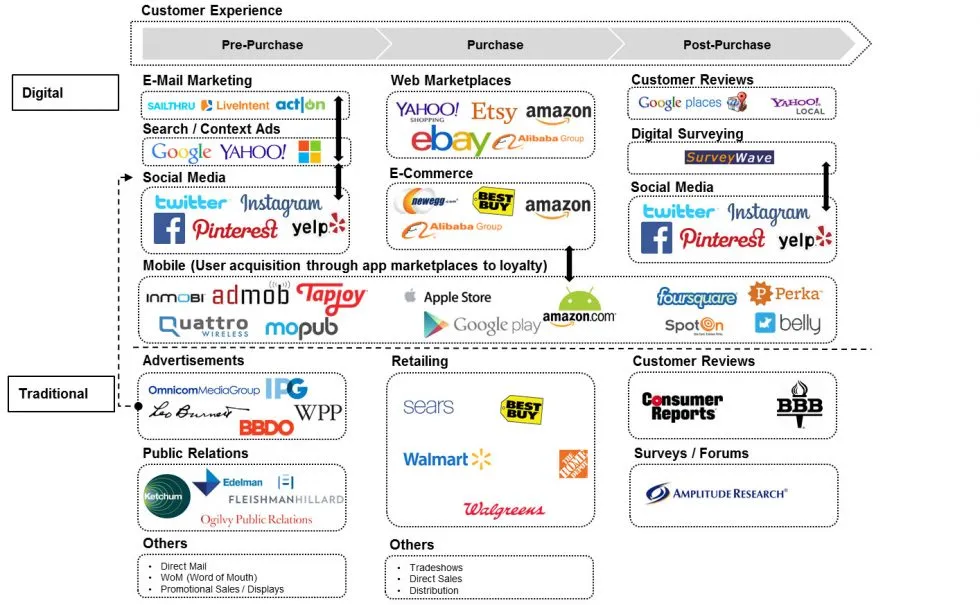ABSTRACT: Digital has altered B2C industry marketing dynamics by creating a parallel, and increasingly cannibalizing, channel vis-à-vis traditional consumer reach.
Today’s B2C customer journey is undergoing a fundamental transformation, hailed as the “digital disruption” – the customer journey map (see Exhibit 1), a well understood analytical framework, is accelerating its evolution to accommodate the advent of larger consumer groups (e.g., Millenials) who are leveraging the digital channel, parallel to the well-established traditional channel. Agnostic of channel, customer experiences can broadly be segmented into:
- Pre-purchase activities
- Point-of-purchase decisions
- Post-purchase retention and engagement
Exhibit 1: The Customer Journey Map

While traditional channels relied on an organized and methodical structure to facilitate content and brand dissemination, primarily driven by the major advertising and PR agencies, direct mailing campaigns, and planned promotions, digital channels have introduced disruption to the brand and content ecosystem by empowering consumer groups and clusters, facilitating “virality”, open and democratized customer influence, and immersive experiences. The smartphone revolution has led to the evolution of the mobile segment, which has developed as a subset to the broader digital sphere enabling on-demand delivery, personalization, and increased frequency of touchpoints.
Awareness generation has both accelerated and fragmented for brands, driven by paid search and social media platforms, while e-commerce or pure web marketplaces like Amazon.com have scaled to disrupt traditional “brick and mortar” retailers as compelling points of transaction, with post-purchase customer engagement augmented via community engagement, brand loyalty, and brand immersion actions by brands on platforms such as Facebook, Twitter, or Instagram.
Notably, the landscape includes prominent leaders who have shaped the contours of today’s digital landscape – Google, Amazon, Facebook, and Twitter – in addition to smaller segment, VC-backed “pure-plays” like Tapjoy.
Given the transformative nature of digital channels and their acceleration in recent years, digital is positioned to continue shaping new forms of consumer engagement, augment traditional channels, and increase the potential for new business models. We highlight some of the critical strategic issues that are generated by the advent and growth of digital across industries, level of digital exposure, and model (B2B vs. B2C).
Issues:
- What incremental or new business models does digital yield?
- How does increasing digitization affect legacy business models?
- What multi-channel strategy can be used to effectively target customer segments?
- How will digital alter the competitive landscape of an industry?
- Which customer segments and channels will yield desirable and profitable outcomes?



